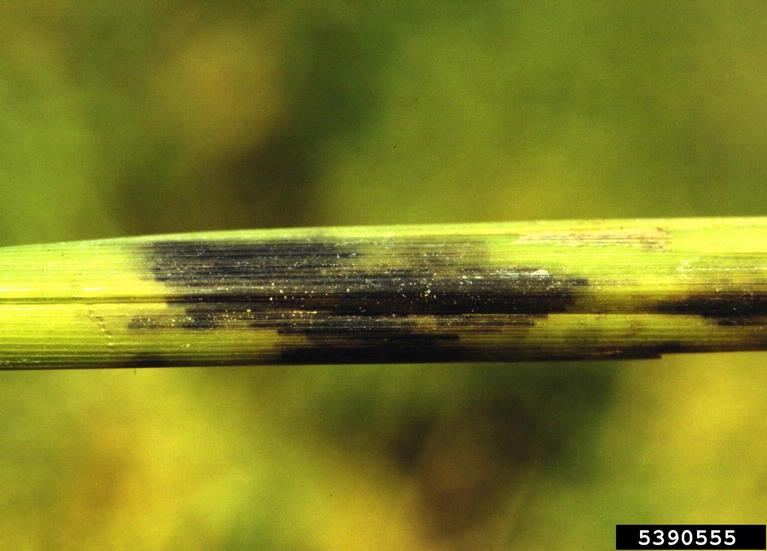
The infection bodies or sclerotia are found in the upper soil layer. They survive in air-dry soil, buried moist rice soil, and in tap water. They can also survive on straw, which is buried in the soil. The sclerotia float on irrigation water and infect newly planted rice during land preparation.
Infection is high on plants with wounds as a result of lodging or insect attack. The panicle moisture content and nitrogen fertilizer also influence disease development.
Symptom
Infection usually occur near the water line through a break or injury. Dark lesion develop and gradually increase in size .latter on the fungus penetrate into the culms of the rice plant corresponding leaf bland turns yellow and then dry out. Rotting of the leaf sheath weaken the stem and leads to lodging which results in production of chaffy grains. There is production of excessive late tillers at the infected Culm when split open which are looked like excreta of the insects.
Causal organism
Stem rot of rice is caused by the fungus sclerotium oryzae. The mycelium of the fungus consist of white to grayish colored, profusely branched hyphae which are 4-8 micron in thickness . The conidiophore of the fungus are dark and septate
Disease cycle
The pathogen overwinters as sclerotia in the upper 2-4 inches of soil and in plant debris. Once the flood is established, sclerotia float to the surface, come into contact with the plant, germinate and infect the leaf sheath near the water surface. The first symptoms are black angular lesions that usually develop after tillering. As the lesions develop, the leaf sheath may die, and the fungus can penetrate into the inner sheaths and stem. These become discolored black or dark brown and shrivel. At maturity, the weakened stem breaks, plants lodge and numerous small black round sclerotia develop in the dead tissues.
MANAGEMENT
Manage stem rot by minimizing the carryover inoculum level (i.e., the number of viable sclerotia) and by using the most resistant varieties available.
Surface-applied potassium fertilizer and winter flooding of rice fields are also reported to suppress rice stem rot development.



